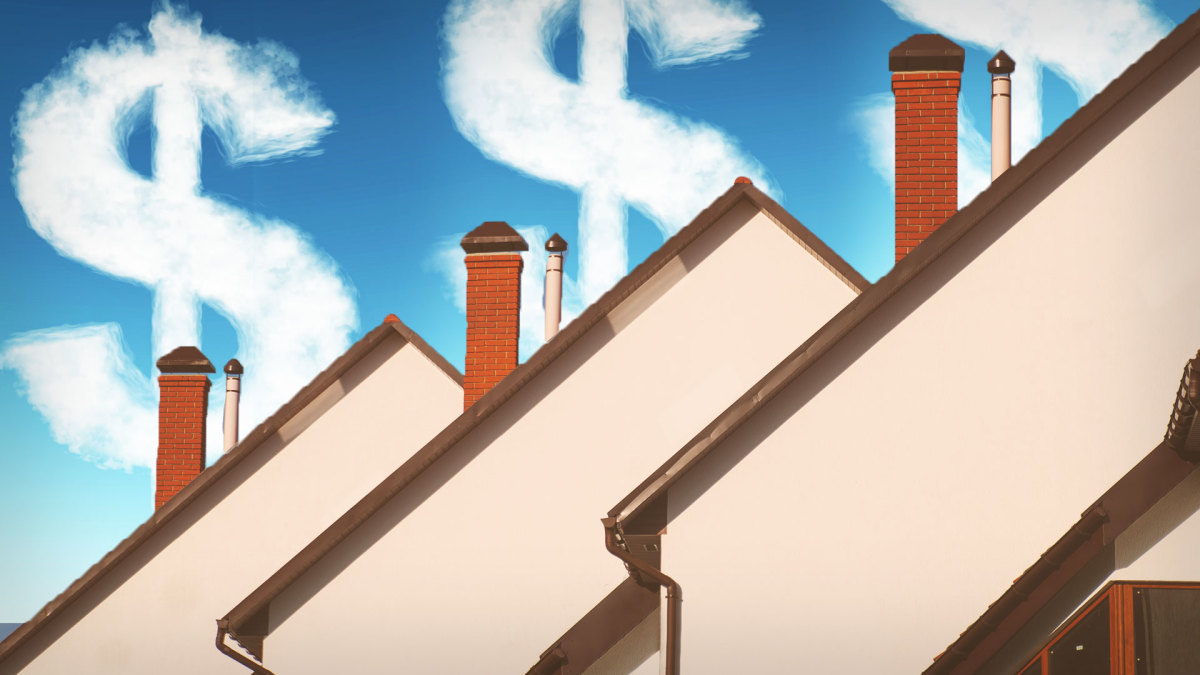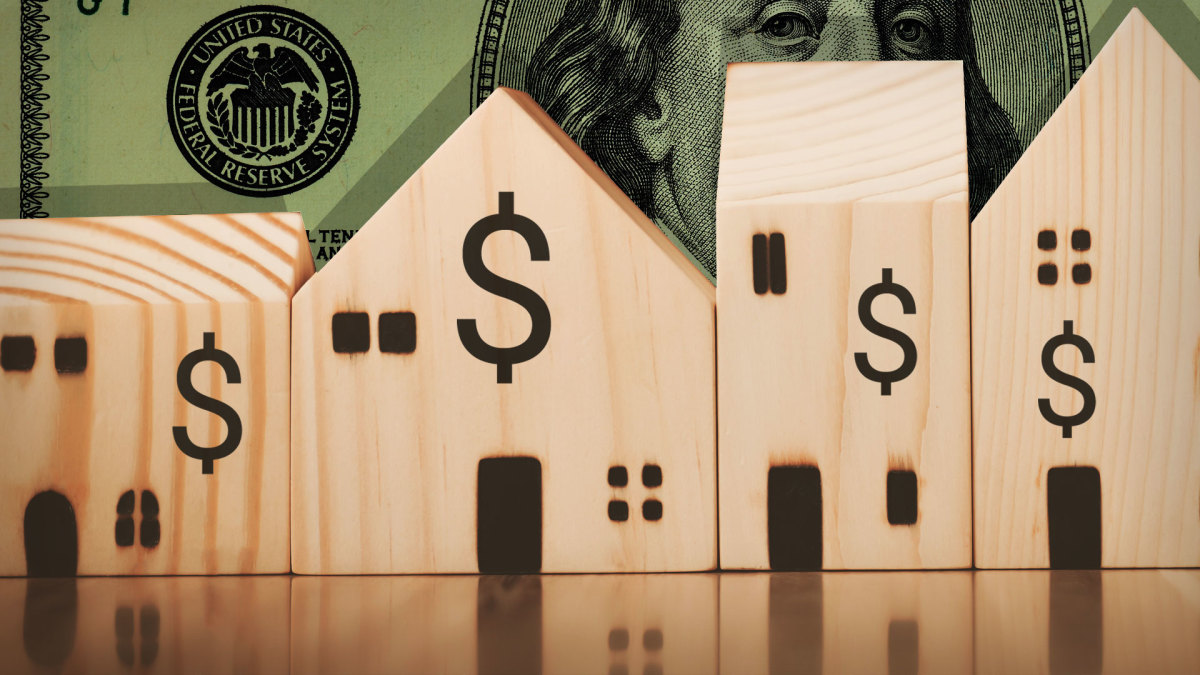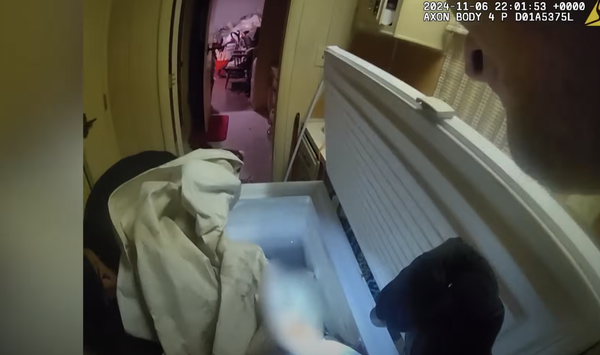
Most recognized that interest rates would climb significantly higher to combat inflation. However, few thought rates would skyrocket so far and fast that mortgage rates would reach 8% this year or that once rates hit these lofty levels, they'd start falling again.
One analyst who wasn't caught off guard was Real Money Pro analyst Bruce Kamich. He told investors in September 2022 that 10-year Treasury yields could hit 5%, resulting in “mortgages at 8%."
Then, in November 2023, he predicted "a potential downside yield target in the 4.16% area" when many expected yields and mortgage rates to surge back to new highs.
Kamich's analysis proved prescient on both accounts, suggesting investors should pay close attention to what he thinks could happen to borrowing rates in 2024.

Image source: Shutterstock/TheStreet
The Fed’s inflation battle takes a turn
The Federal Reserve's dual mandate is to craft monetary policy that maintains low inflation and unemployment.
That mission was tested during Covid when unemployment soared, and economic activity collapsed because of lockdowns. It was tested again when Chairman Jerome Powell's post-Covid zero interest rate policy, or ZIRP, collided with a supply chain debacle, causing inflation to surge above 9% in 2022.
Related: Mortgage rates fall below 7% as housing market begins long-awaited rebound
The dramatic price increase took a toll on consumer wallets, forcing them to shift spending to necessities as wages lost buying power. In response, the Federal Reserve adopted its most aggressive series of increases to the Federal Funds Rate since the early 1980s when then-Fed Chairman Paul Volcker increased rates to nearly 20% to lower inflation.
The Fed's new war on inflation has been painful for businesses and consumers, especially would-be homebuyers.
Gross Domestic Product, or GDP, slowed, causing corporate earnings to decline. Meanwhile, home prices surged because homeowners were reluctant to give up Covid-era sub-3% mortgage rates, and monthly mortgage payments jumped because of the march up to 8% on the 30-year fixed mortgage rate.
Nevertheless, the Fed appears to be winning its inflation battle. Despite a brief rebound this summer, the Consumer Price Index (CPI), a closely watched inflation measure, slowed to 3.1% year-over-year in November, far below its nearly double-digit reading in June 2022.
The recent return to its downward path prompted investors, who had been selling 10-year Treasury bonds, driving yields upward, to start buying. As a result, the 10-year Treasury yield has fallen below 4%, finishing at about 3.9% on Dec. 22, taking mortgage rates below 7%.
The 10-year yield chart suggests yields are heading even lower
Bruce Kamich has used technical analysis to forecast stock, bond, and commodity markets for over 50 years. His experience includes navigating runaway inflation in the late 1970s and early 1980s and rock-bottom low rates since the Great Recession in 2008.
His analysis of the 10-year Treasury Note yield chart is what led him to conclude that rates broke a forty-year downtrend last year, resulting in his 5% 10-year Treasury yield and 8% mortgage rate forecasts.
More Real Estate:
- Elon Musk Warns About a New Housing Crisis Worldwide
- These Affordable US Real Estate Markets Are Under the Radar
- Dave Ramsey Explains Why Now Is a Great Time to Buy a House
Similarly, his evaluation of yield charts in November caused him to predict rates would fall.
Now that decline in the 10-year yield has exceeded his 4.16% target, Kamich recently revisited his analysis to see what they may do in 2024. Fortunately for borrowers, he thinks rates will continue to move lower.
“The 10-year Treasury yield could fall to the 3.70% area or a touch lower in the short-run," says Kamich. "Maybe we could see 3% or slightly lower by the third quarter 2024 before the rates start rising again."
Using point-and-figure charts, Kamich calculated a 10-year yield target of 2.8%. Given that 10-year Treasury yields are used to set mortgage rates, his forecast suggests that mortgage rates will decline next year, helping prospective homebuyers.
Federal Reserve rate cuts are on the horizon
Kamich quickly reminds us that P&F charts aren't guaranteed and don't factor in time, so it's tough to gauge precisely when we might see sub-3% interest rates. Nevertheless, Wall Street expects the Fed will embrace rate cuts in 2024, and the Federal Reserve's latest forecast backs up that expectation.
In November, analysts at UBS said inflation would continue to decline but unemployment would rise, leading to the central bank pivoting from hawkish rate hikes to dovish rate cuts.
They predict that the Federal Funds Rate will be lowered by 2.75% to finish 2024 at 2.5%. Bank of America expects the Fed will begin cutting rates by June 2024. Meanwhile, Goldman Sachs expects five 0.25% rate cuts by the Fed next year, including three early in the year and two later in the year.
"We see the committee delivering at least three back-to-back 25-basis-point cuts, probably in March, May, and June," said Jan Hatzius, Goldman Sachs chief economist. "Anything less would raise the question 'why bother?'"
If analysts are correct, a friendly Fed could be what causes the 10-year Treasury yield to continue falling toward Kamich's longer-term 2.8% target, saving borrowers big money.
Sign up for Real Money Pro to get more insight from Kamich, including the stocks he thinks could be winners.







